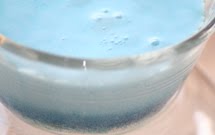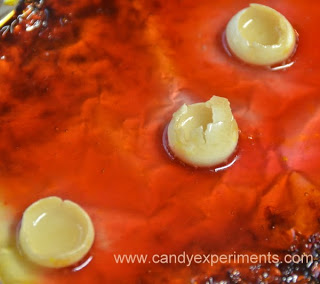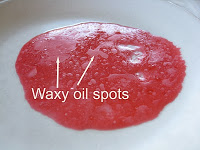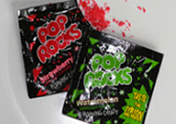Eaten Your Fill? How to Experiment on Your Child's Leftover Halloween Candy
By Loralee Leavitt, CandyExperiments.com
Kids love Halloween candy. But too much candy can lead to stomach aches, cavities, and health problems. What do you do if your kids collect more candy than you want them to eat? Experiment with it.
At candyexperiments.com, we’ve created several experiments with candy that teach real science. Here are some of our favorites.
Acid Test
Sour taste is caused by acid, so any sour candy contains acid. Test sour candy such as LemonHeads, Nerds, WARHEADS, Pixy Stix, or sour gummy candy by dissolving it in about ¼ cup of warm water. (If you’re using hard candy like Smarties, crush it first to help it dissolve.) Let the sour part of the candy dissolve, whether it’s the whole candy, or the shell (as with Lemonheads), or a sour powder coating (as with Sour Patch Kids.) After the sour part has dissolved completely, sprinkle in a small spoonful of baking soda. The dissolved acid reacts with the baking soda to create bubbles of carbon dioxide gas. The more bubbles you see, the more acid there is!
This experiment is especially fun to do with super-sour Warheads. Drop them into baking soda water, and they’ll bubble right away.
Melting
When you melt your candy, you’ll learn all sorts of things about it. Cover a baking sheet with tinfoil. Unwrap your candy and put it on the sheet. (Caution: never melt a jawbreaker!) Place in low oven (300-350 F) and check back every few minutes to see what happens. You might be surprised by what your candy does. Smarties melt into clear puddles. Pixy Stix powder melts and sticks together. Fruit Lifesavers melt into puddles, but mint Lifesavers don’t. Snickers bars melt and flatten, leaving the peanuts sticking up.
Oil Test
When you melt Starbursts, you’ll discover a secret ingredient. Place a Starburst on a foil-lined cookie sheet. Heat it in a low oven until it melts into a puddle. After it cools, check the surface for white waxy spots. You’re looking at hydrogenated palm kernel oil, which has separated out from the rest of the candy.
Pop Rocks
If you want a really explosive experiment, try testing Pop Rocks. Pop Rocks contain bubbles of carbon dioxide. Drop the Pop Rocks into water. As the candy dissolves, the gas is released, creating a crackling noise. Look for tiny bubbles–this is the carbon dioxide rising to the surface.
Kids used to worry that if you drank too much soda and ate too many Pop Rocks, you would explode. Ask your children what they think. Do the Pop Rocks contain enough gas to be dangerous?
Let Your Children Choose
Children are natural scientists, eager to experiment, sculpt, and create. I’ve seen children experiment with what colors they can create, what kinds of smells they can mix up, and whether they can float licorice sticks by plugging the ends with taffy. Many of our best candy experiments were invented by children, such as the floating letters experiment.
Allow your children to try their own candy experiments. Let them sort through their candy to select discards for testing, or alternatively, let them set aside some favorite candies and test the rest. Supply them with containers of water, trays for melting, baking soda for acid testing, spoons for stirring, and any other scientific equipment they ask for. You’ll find that young children often love unwrapping and stirring the candy, even when there’s no science involved, or dumping baking soda into any concoction they choose, acidic or not. Older children might use elaborate engineering to float heavy candy, or sculpt amazing creations, or design art projects you haven’t imagined. Be on hand with a garbage sack for wrappers, and lots of paper towels and clean water for spills, and remind them that “the candy is not for eating, it’s for experiments.” Most children will naturally shift into the mode of using candy for science instead of sweets, and if they’re sneaking too many tastes, you can close the science lab at any time.
Whether they’re testing for acid, melting candy into bubbling puddles, or creating their own experiments, your children will love this new twist on using up Halloween candy. So will you, as you pour the sugar down the drain.
Loralee Leavitt destroys candy for the sake of science at www.candyexperiments.com. Her book, Candy Experiments, will be published in January.








Leave a Reply
Want to join the discussion?Feel free to contribute!